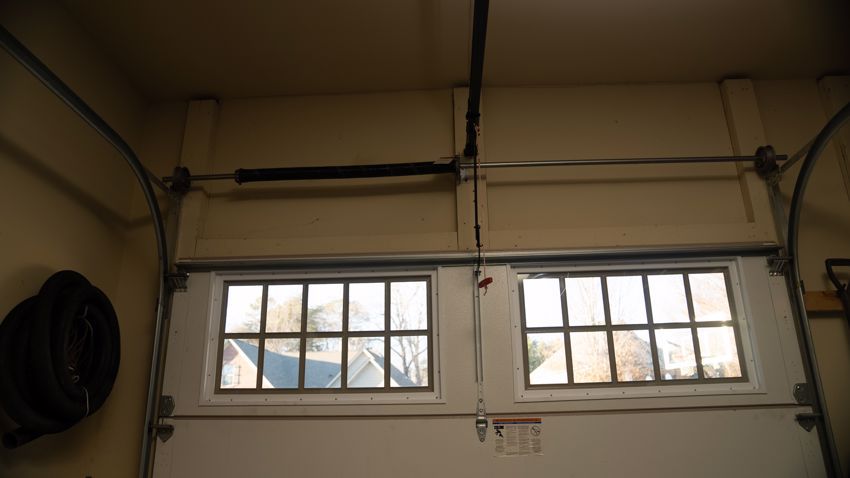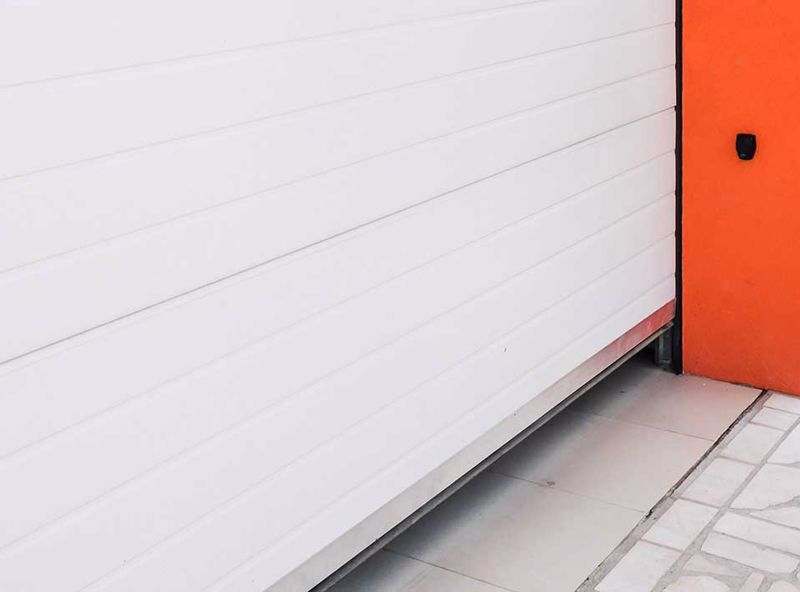Garage Door Spring Repair: DIY Fixes
- Aug 29, 2023
- Safety & Security
- 8 minute read

The mechanics that allow your garage door to lift and lower involve the springs on either side of the door frame. The door is lifted through a transmission of energy from the springs attached to the door, the garage door opener, and the tracks. These forces all work together, but if one fails, such as a cable snaps or falls out of a drum, the garage will not function at all and will either fall or be unable to lift.
Garage door spring repair can be difficult and dangerous, but with the right help, it can be done properly.
Garage Door Spring Types
There are two types of garage door springs: torsion springs and extension springs. The difference between these two will determine how the door operates.
Torsion springs are very common. In general, all garages use springs to open, but the torsion springs need torque to work. The cables will wind the springs up when the door is lowered, which helps lift the door open as they unwind.
Extension springs are used typically when there is not a lot of headroom in the garage. These springs are installed horizontally alongside the frame and then connect to the bottom corners of the garage door. The springs are stretched when the door is closed and contracted when the door is open. A key differentiator with this spring type is that the more the door is used, the more stress is placed on the spring.
Other Garage Door Springs to Know About
While these next three aren’t exactly what you’d think about when garage door springs come to mind, they are essential to how the garage door functions. The lifting cable, retaining cable and emergency release cable all help lift and lower the garage so that it’s balanced and safe to use.
The lifting cable allows your garage door to open (as the name suggests) and is the most likely to break. They help power the axle that allows the door to lift and lower.
The retaining cable is also known as the safety cable and is used with extension cables. They’re used as a backup in case the spring is damaged. Retaining cables are attached to each end of the garage door and threaded through each extension spring. If a spring breaks or fails, the safety cables keep the broken pieces in place.
Without a safety cable, the extension springs would pop off and around your garage like a rocket, potentially damaging any items inside and putting anyone’s safety at risk.
The emergency release cable is equipped in every garage and steps in if the power goes off and you need to operate your garage manually or if the motor breaks.
Do You Have a Broken Garage Door Spring?
If your garage sounds like it should be working but is not moving up or down, then that’s a clear indication you may need a spring replacement.

The door may not close all the way or is uneven.
You can check to see if there is slack in the lifting spring, or if it’s wound around something it shouldn’t be. Other signs of broken springs include:
- The door is crooked or unbalanced.
- The door fell.
- The door is shaking or making unusual noises.
- The door is stuck in place.
From there, you’ll need to decide if you should repair or replace the springs.
Replacing Your Garage Door Spring
Although one spring is broken, it’s advisable to replace all of the springs around the garage door at the same time. It’s likely that all of the springs are about the same age and could also fail soon.
Repairing your springs means replacing them entirely. Unfortunately, some bubble gum and electrical tape won’t do the trick for this project. So, the first important step to replacing your garage door springs is taking into consideration the safety measures necessary for the job: a trusted person nearby in case something happens or if you need a hand and your protective gear, including winding bars, safety goggles, leather gloves and a sturdy step ladder.
Torsion Springs
- Open the door as far as it will open, and place your step ladder underneath it.
- Take two pairs of locking pliers and lock them onto the track below the last roller.
- Below the winding drum, you’ll find the broken cable.
- Carefully unwind the cable using the winding bar.
- Insert the winding bar into the bottom hole of the winding cone.
- Hold the bar in place while you loosen the two set screws.
- Insert the second winding bar into the 9:00 position hole.
- Remove the bottom bar and unwind the spring a quarter turn at a time.
- Locate the end without the loop and place it in the notch on the drum.
- Wind the cable in the same direction as the original until there is just enough to reattach to the pin at the bottom of the door.
- Slide the looped end of the cable onto the pin.
- Remove the ladder and clamps to test the garage.
- Operate the garage up and down a few times until the door is flush with the floor and lifts evenly.
Extension Springs
This process is very similar to installing torsion cables but with an S hook and pulleys.
- Open the door as far as it will go and place a ladder underneath.
- Place locking pliers onto the track on both sides of the door.
- Remove the S hook from the track and pulley.
- Follow precisely the same path as the old cable with the new one.
- Hook the looped end of the cable around the pin at the bottom of the door.
- Wind the cable around the pulleys exactly in the same direction as the previous cable.
- Connect the cable to the frame.
- Remove the clamps and ladder.
- Test the garage door function.
Safety Cable on an Extension Spring
If you’re replacing one cable, it’s best to replace them all. Adding the safety cable to this operation will ensure that if the extension cable breaks, it will not flail around the garage or crack the floor.
- Unplug the power cord to your garage door opener and detach it from the door.
- Get the door’s weight to determine the type of cables you’ll need.
- Remove the safety cable.
- Detach both ends of the cable from the track and the S hook.
- Pull the old cable through the spring.
- Confirm the cable is exactly like the previous one.
- Connect the new cable to the rear side of the system.
- Align the cable as close as possible to the spring.
- Pass it through the extension cable.
- Reattach the safety cable to the track using the S hook.
Why Replacing Your Spring Could Be Dangerous
Depending on the type of cable (torsion or extension) you have will determine if it’s a good idea to DIY its repair or replacement. If you have no training or experience in garage door repair, then you should strongly consider calling in a professional to do the work for you. Garage door projects are notorious for accidents involving severe injury and trips to the hospital — especially when the action involves springs.
Additionally, even after the springs have been removed and replaced, there is a high chance that the door will not pass relevant safety standards. It’s difficult to adjust the spring tension and perform other crucial tasks related to garage door maintenance if the springs are repaired incorrectly. A garage door that does not work properly is a hazard to everyone nearby.

If your car is trapped inside of your garage with the door not functioning, then you’ll have to wait for the weekday to call a repair professional to open the garage door safely.
Doing these steps on your own with limited space — especially if you’re attempting this project for the first time — could damage your vehicle, if not your body.
Most garage doors are heavy — between 200 and 300 pounds — so you’ll need four strong friends to help you lift the door while you lock it in place and slide your car out of the garage.
Have an Amarr Garage Door? Call Us for Repair
There are many details involved in removing and replacing a garage door spring. The process can take hours and hundreds of dollars to complete if you are not familiar with this procedure. Emergency garage door technicians are available across the US, Canada and Mexico. No matter what type of garage door needs you may have, Amarr professionals are available to help you along the way.

